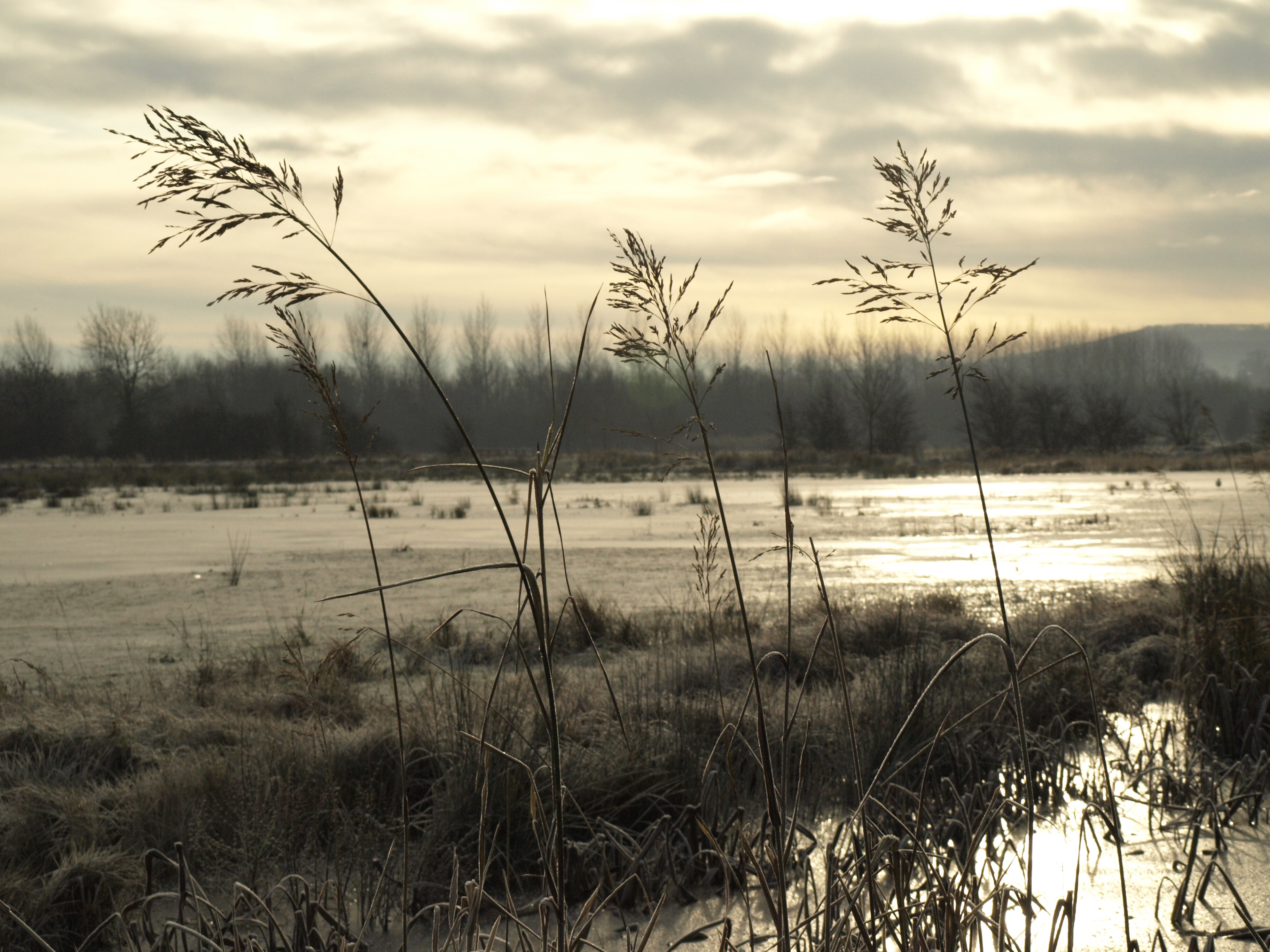Winter
Short cold days and little warmth from the sun. The weather is wet, and from time to time all is covered with snow. Autumn and winter are the most likely times for flooding to occur when the whole area can be covered for several weeks.

Plants

Now is the time to cut back the reeds to make sure we have a healthy growth next year. Over 5 years, we’ll be cutting a mosaic of reeds to make sure we have a good mix of young and mature reeds, which will keep them growing well, while keeping our important bird habitat.
Our winter evergreens provide a splash of colour in what can seem a drab brown landscape. Ivy becomes a crucial source of winter nectar for insects and the clusters of purple berries are soon gobbled up by birds.
Glossy green holly protects its bright berries with some very spiky leaves, not a problem for birds, but browsing animals such as deer are put off from eating such a painful prickly mouthful. The berries are poisonous for people and pets, but wildlife seems to manage to eat them after a frost.
Mistletoe hangs in lacy green globes from otherwise leafless trees. It’s not hard to see why there are so many folk tales about this strange, parasitic plant.
Now is the perfect time to plant trees to fill up any gaps there might be in our hedges and carry out traditional management, such as hedgelaying. This acts to rejuvenate the hedge, thicken it up and continue to provide berries and fruit later on in the year, a much more sympathetic option than cutting it back.
 Birds
Birds
During winter it is the changing bird population that provides particular interest. Everyone loves to feed the ducks on the wetland, particularly on bread. But did you know there are other, better things to offer ducks than your stale, sliced white? Leafy green veg, peas, beans and lettuce, all chopped up into small bits, go down well. The duckweed that floats on the surface of the pools is an important source of natural food for ducks.
Look out for Reed Buntings, perching on the heads of bulrushes, pulling out and scattering their fluffy seed heads while they eat.
In winter other species seek shelter on the Wetland including Water Rail, in hard winters Siskin and Brambling and very occasionally Waxwings visit.
Don't forget to feed the birds in your own garden!
Mammals
The presence of some of our more elusive visitors and residents can become a little more obvious at this time of year. Both mud and snow are excellent for spotting tracks left behind. Perhaps you’ll find a fox’s trail across the meadows, or if you’re really lucky, the webbed clawed impression of an otter.
Most often, it will be human and dog tracks that dominate the paths and fields, but even so, these will give you a good opportunity to hone your tracking skills and who knows, you may see something a bit special.
Photographs Winter Landscape and Female Reed Bunting © Richard Stott

